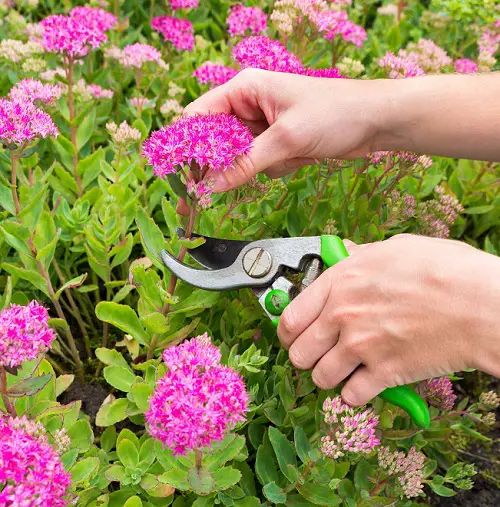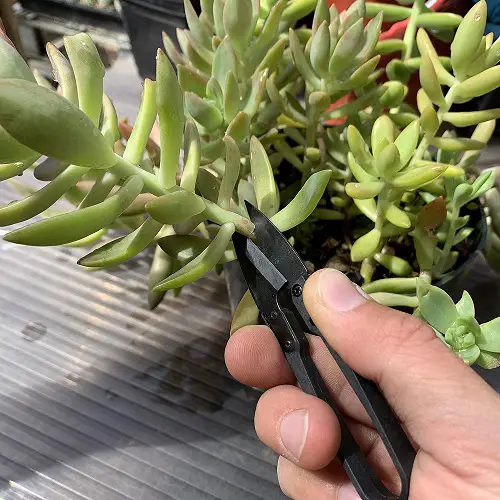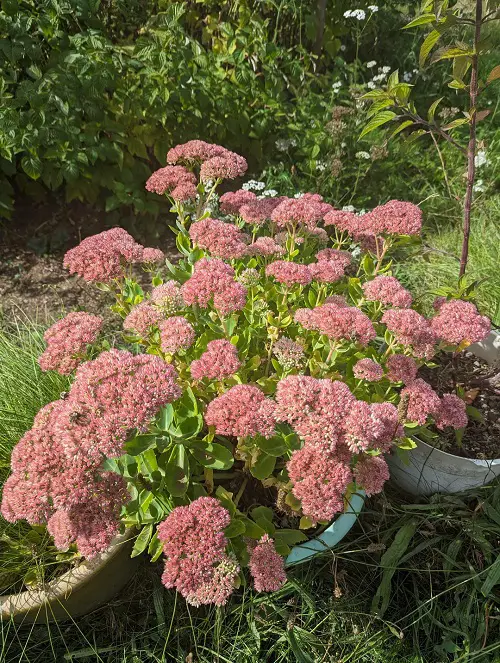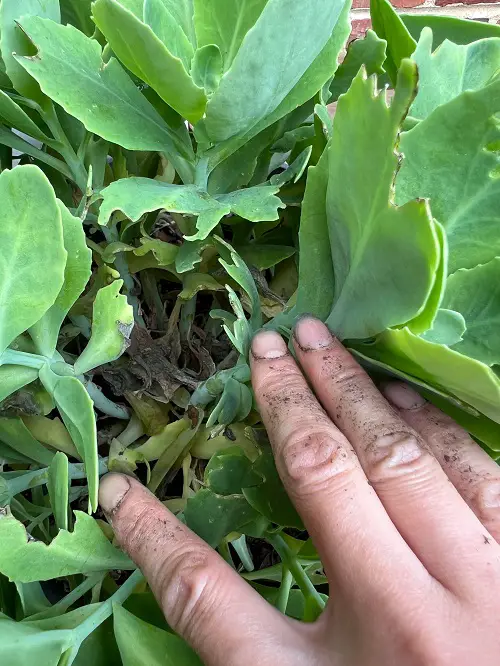Wondering when to cut back your sedum for the winter? Here we are with the best time and techniques to do this—Keep reading!
Sedum is a hardy, easy-going plant, but it appreciates a little TLC now and then—especially with timely pruning. Let’s walk through when and how to prune sedum for winter, so your garden’s in top shape come spring.
The Best Times to Prune Sedum for Winter

Pruning at different stages throughout the year helps keep your sedum looking its best and prepares it to thrive. Here’s a season-by-season look at the best times to trim.
1. Spring
After the last frost, trim your sedum down to ground level. This fresh start encourages strong, healthy growth and allows plenty of air circulation as the plant fills out. Think of this as your sedum’s annual reset button.
2. Early Summer
In late May or early June, give your sedum a light trim—cut it back by about half if it’s a taller variety, like the popular ‘Autumn Joy.’ This helps keep it compact and prevents it from getting leggy or top-heavy. A trim here means a sturdier, tidier plant all season long.
3. Mid to Late Summer
Skip the scissors during the peak summer heat. The plant is putting all its energy into growth and budding at this time, so trimming now could be more of a stressor than a help.
4. Fall
Once your sedum finishes blooming, do a light cleanup by removing any dead or damaged stems. This keeps the plant tidy and reduces disease risks as it gears up for winter.
5. Winter
Come winter, sedum doesn’t need any pruning. Let it be—its structure actually helps protect it from cold weather, so it’s best left untouched until spring returns.
Why Pruning Sedum Matters

Well, regular pruning keeps your sedum healthy, helps it grow more evenly, and encourages beautiful blooms. Removing dead or damaged parts also improves air circulation, which helps prevent disease. After flowering, a trim ensures your sedum is tidy, resilient, and ready for the next growing season. A well-pruned sedum is less likely to get leggy, stays healthier overall, and focuses its energy on flowering instead of just maintaining old, spent stems.
How to Prune Your Sedum—A Simple Guide
Pruning sedum isn’t rocket science, and with a few simple steps, you’ll have it looking neat and fresh. Start by clearing any garden clutter around the base, like fallen leaves or other debris—this helps prevent pests and diseases. In early spring, trim the plant right down to ground level, removing old growth and giving it a fresh start.
By early summer, it’s time for a lighter trim. For taller sedum varieties, cut back by about half to keep the plant compact and well-shaped. After it blooms in the fall, give it one last clean-up trim, focusing on any damaged or dead stems. There’s no need to go all out—just a little tidy-up will do as the plant prepares for winter rest.
Bonus Pruning Tip
When pruning sedum, using sharp, clean shears is key to making smooth cuts without damaging the plant. Sharp tools not only make the job easier but also help prevent infections or disease. While it may be tempting to trim your sedum in mid-summer to keep it neat, it’s best to hold off. Cutting during the hottest part of the year can put unnecessary stress on the plant, so stick to trimming in spring and early summer.
If you live in a colder climate, you might want to consider adding a layer of mulch around the sedum’s base in late fall. This extra protection helps insulate the roots and shields the plant from extreme winter temperatures. And with these simple tips, your sedum will stay strong and healthy, ready to burst into bloom next season.
Just following these easy pruning tips will keep your sedum looking its best and ready for another gorgeous season. Have any go-to pruning tips of your own? Share them in the comments below!









